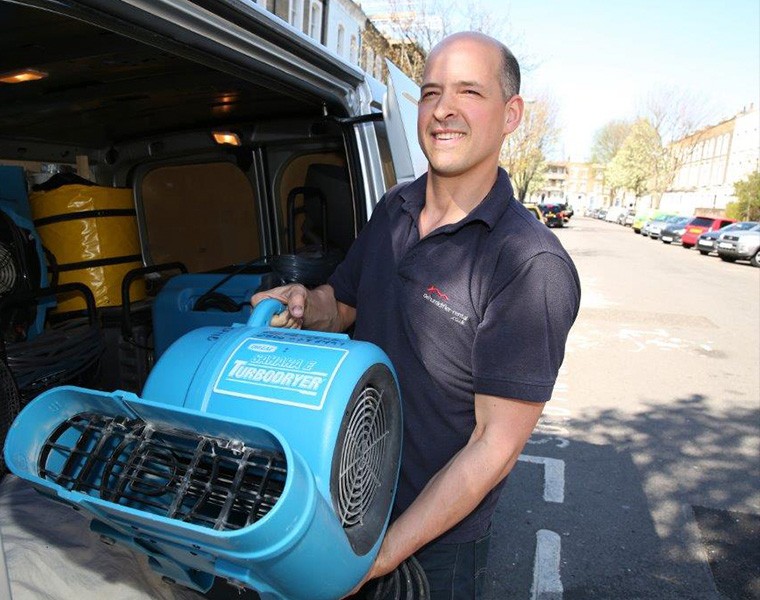How can I speed up the drying process?
Dry air, heat, air movement and preparation of the wet materials all affect the drying process.
Dehumidifiers work by removing moisutre from the air in a room, which then allows moisture in building materails to evaporate quicker. Air movement from industrial fans helps target the dry air and speed up evaporation from surfaces. To further help with evaporation, warmth helps, so the addition of heaters particularly at colder times of year may be beneficial.
Preparation of surfaces before drying is often useful in speeding up building drying. Where moisture is trapped behind impervious materials such as laniate flooring, tiles, wallpaper and heavy paints, these can act as a vapour barrier to slow down drying by preventing the evaporation of moisture. We often recommend that preparation works in the form of stripping back these vapour barriers take place before accellerated drying is undertaken.
Once the drying equipment is in situ, doors and windows will need to be closed in order to create a closed air environment. Dehumidifiers recycle the same air repeatedly, which will strip moisture out of the air. Fans are used to circulate dry air and displace saturated air back towards the dehumidifiers. Heaters can be used to further increase the evaporation rate as warmer air can hold more moisture.
As a rough guide, at the early stages of flood restoration drying, increasing air velocity from 0.5 metres per second to 3.5 metres per second would double the evaporation rate, with a further doubling of the evaporation rate by increasing air movement to 7.0 metres per second.
The affect of heat on the evaporative process is that the rate of evaporation approximately doubles with an increase in air temperature from 20 to 30 degrees celsius, with a further doubling of the evaporation rate with an increase to 40 degrees celsius.
Call us to discuss the suitable building drying equipment for your property, and advice as to the possible drying time for your wet property.
 020 7760 7660
020 7760 7660